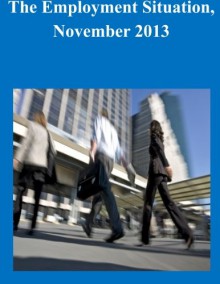Both the number of unemployed persons, at 10.9 million, and the unemployment rate, at 7.0 percent, declined in November. Among the unemployed, the number who reported being on temporary layoff decreased by 377,000. This largely reflects the return to work of federal employees who were furloughed...
show more
Both the number of unemployed persons, at 10.9 million, and the unemployment rate, at 7.0 percent, declined in November. Among the unemployed, the number who reported being on temporary layoff decreased by 377,000. This largely reflects the return to work of federal employees who were furloughed in October due to the partial government shutdown. (See tables A-1 and A-11.) Among the major worker groups, the unemployment rates for adult men (6.7 percent), adult women (6.2 percent), teenagers (20.8 percent), whites (6.2 percent), blacks (12.5 percent), and Hispanics (8.7 percent) changed little in November. The jobless rate for Asians was 5.3 percent (not seasonally adjusted), little changed from a year earlier. (See tables A-1, A-2, and A-3.) The number of persons unemployed less than 5 weeks declined by 300,000 in November, partially reflecting the return to work of federal employees on furlough in October. The number of long-term unemployed (those jobless for 27 weeks or more) was essentially unchanged at 4.1 million in November. These individuals accounted for 37.3 percent of the unemployed. The number of long-term unemployed has declined by 718,000 over the past 12 months. (See table A-12.) The civilian labor force rose by 455,000 in November, after declining by 720,000 in October. The labor force participation rate changed little (63.0 percent) in November. Total employment as measured by the household survey increased by 818,000 over the month, following a decline of 735,000 in the prior month. This over-the-month increase in employment partly reflected the return to work of furloughed federal government employees. The employment-population ratio increased by 0.3 percentage point to 58.6 percent in November, reversing a decline of the same size in the prior month. (See table A-1.)
show less

